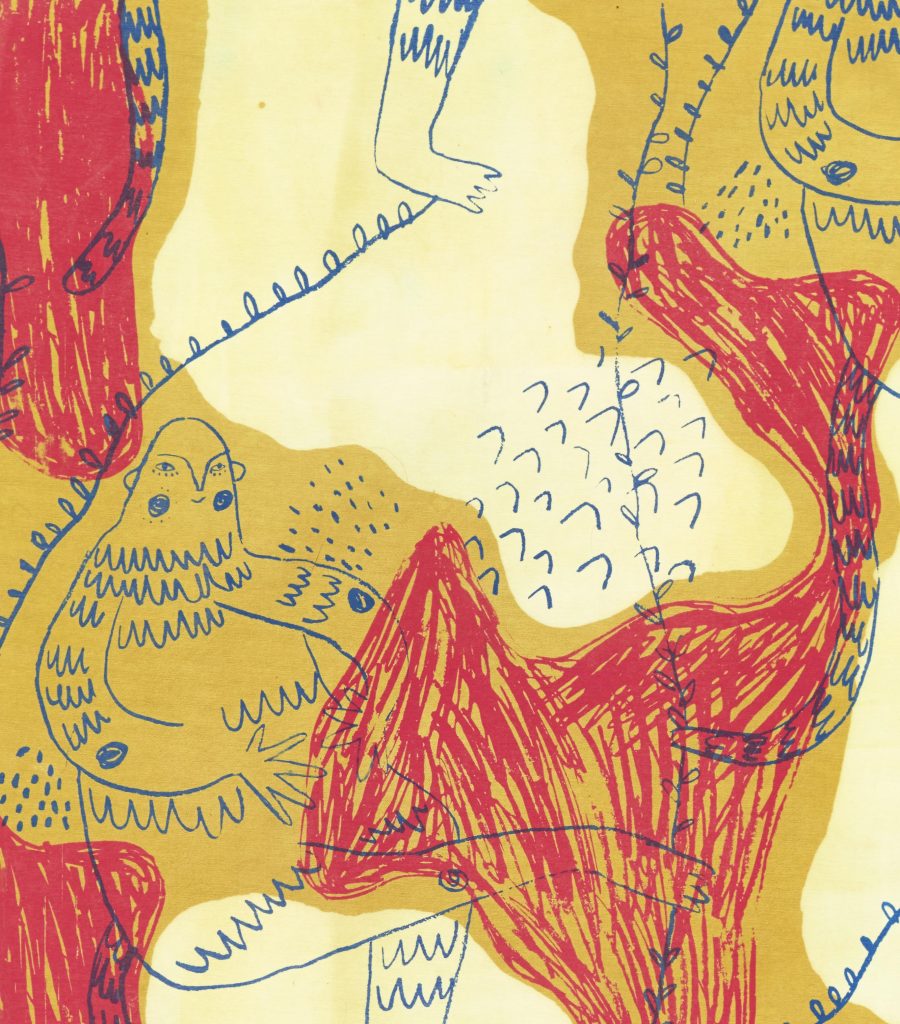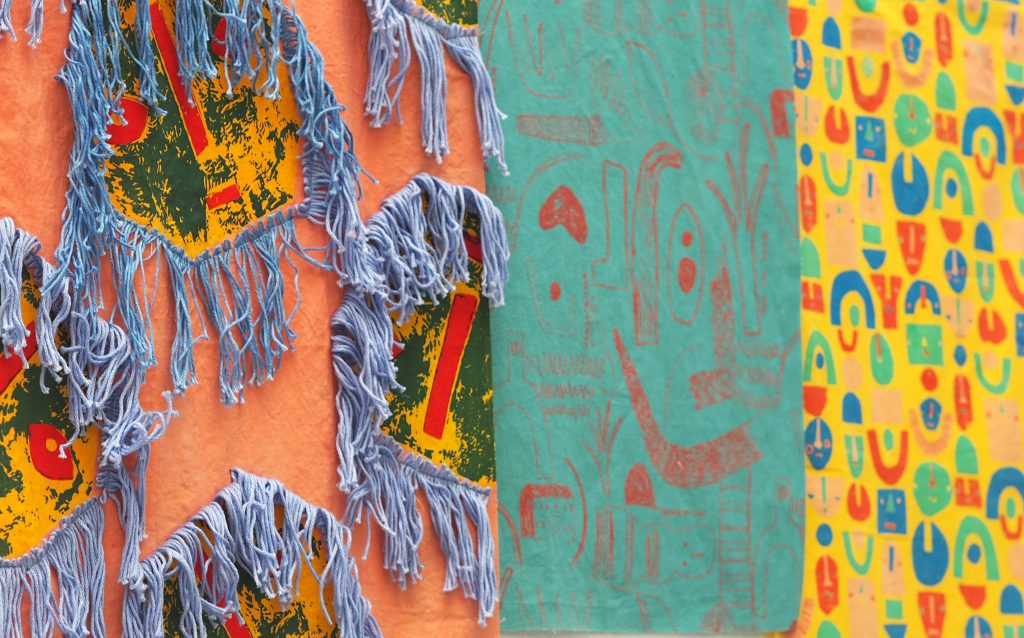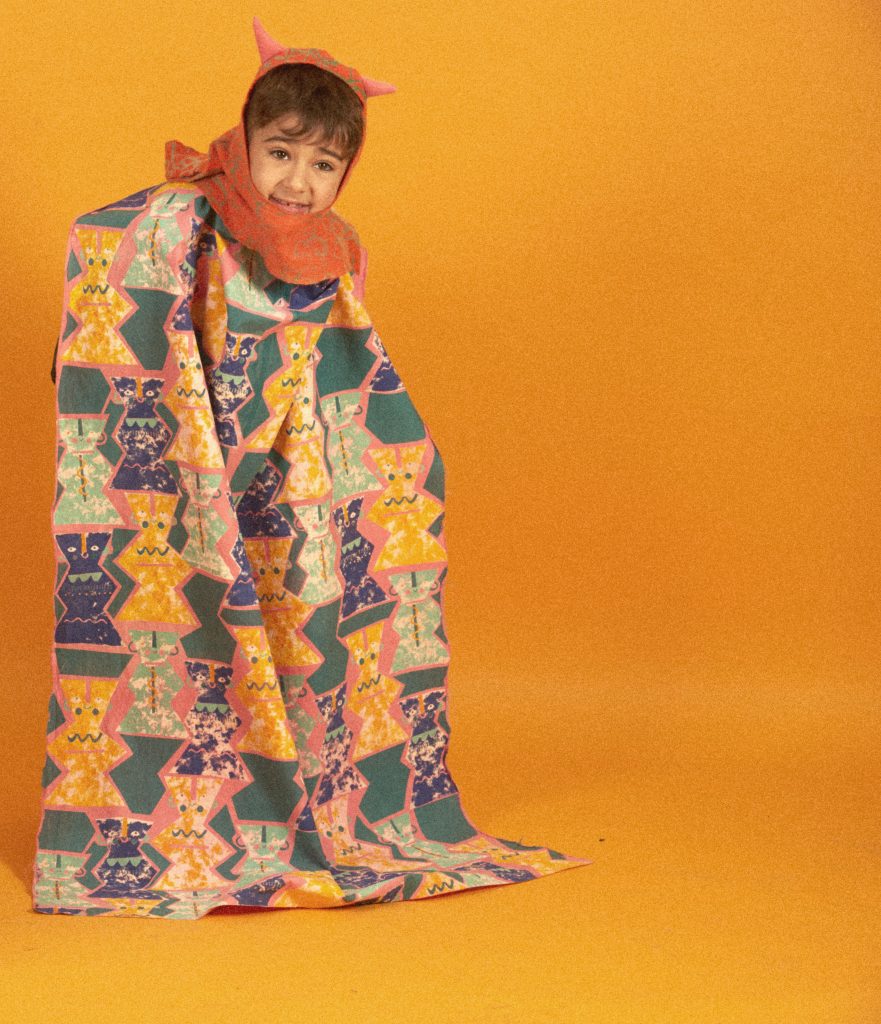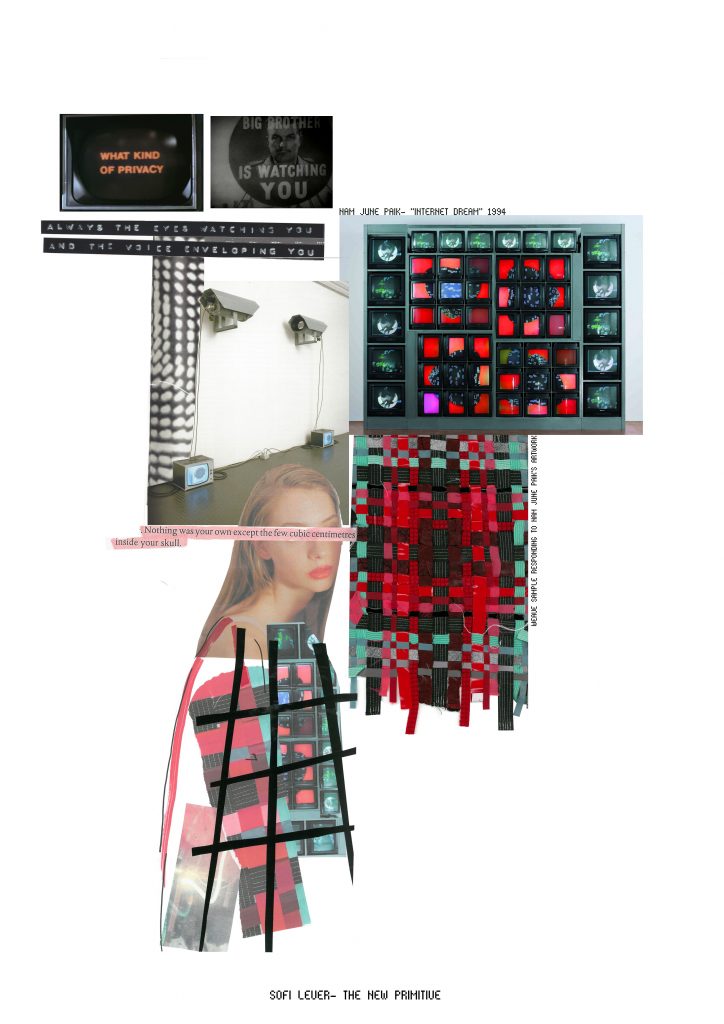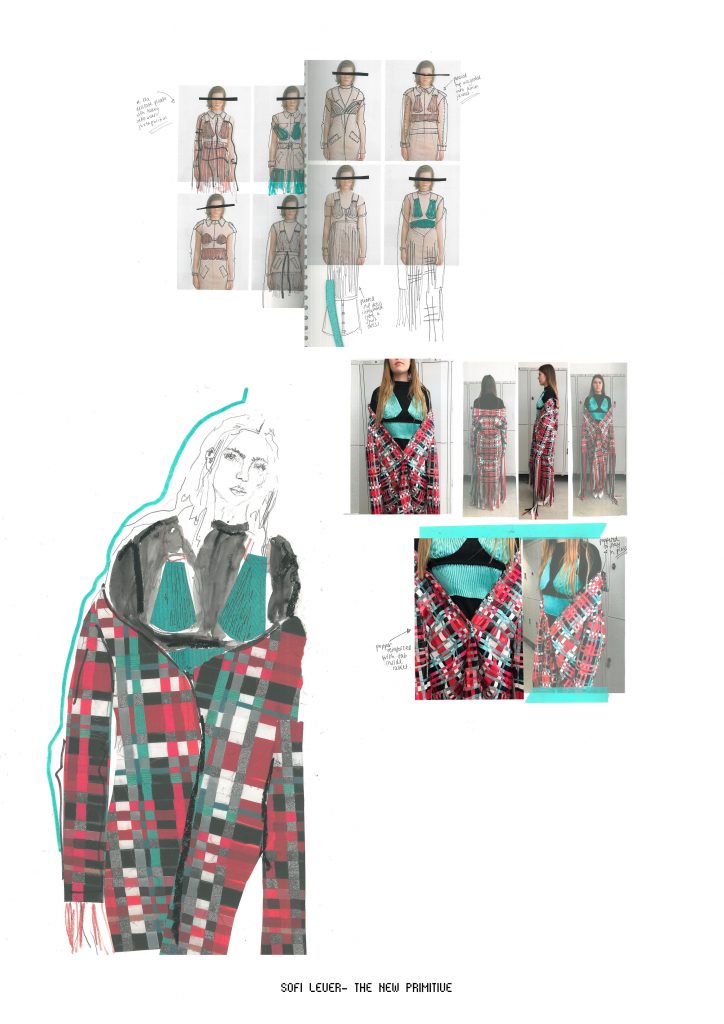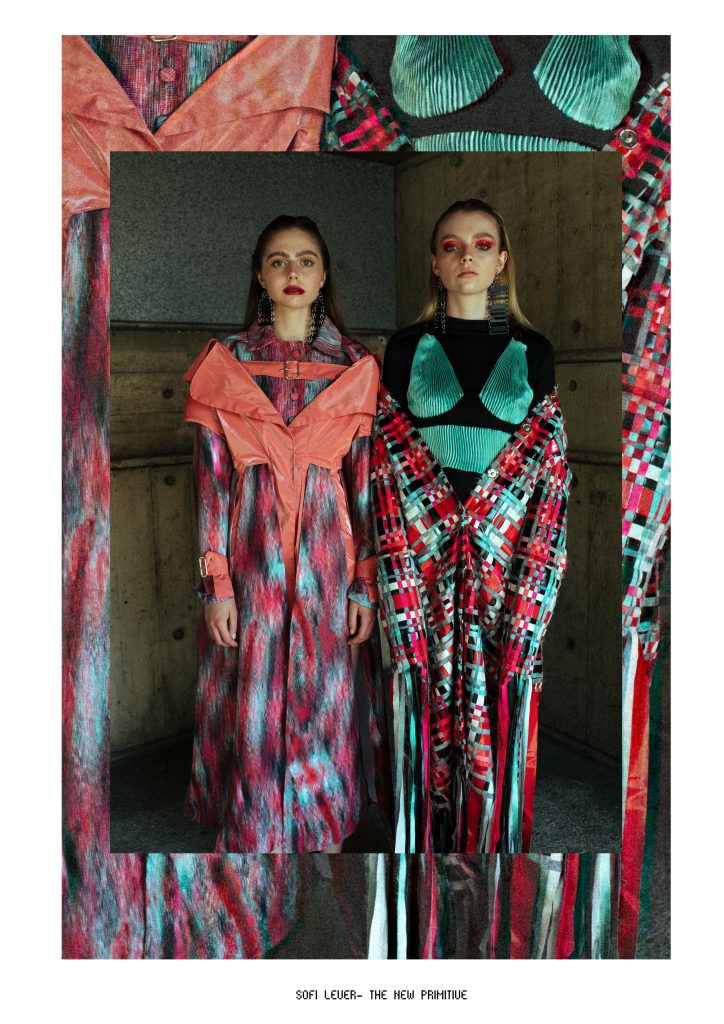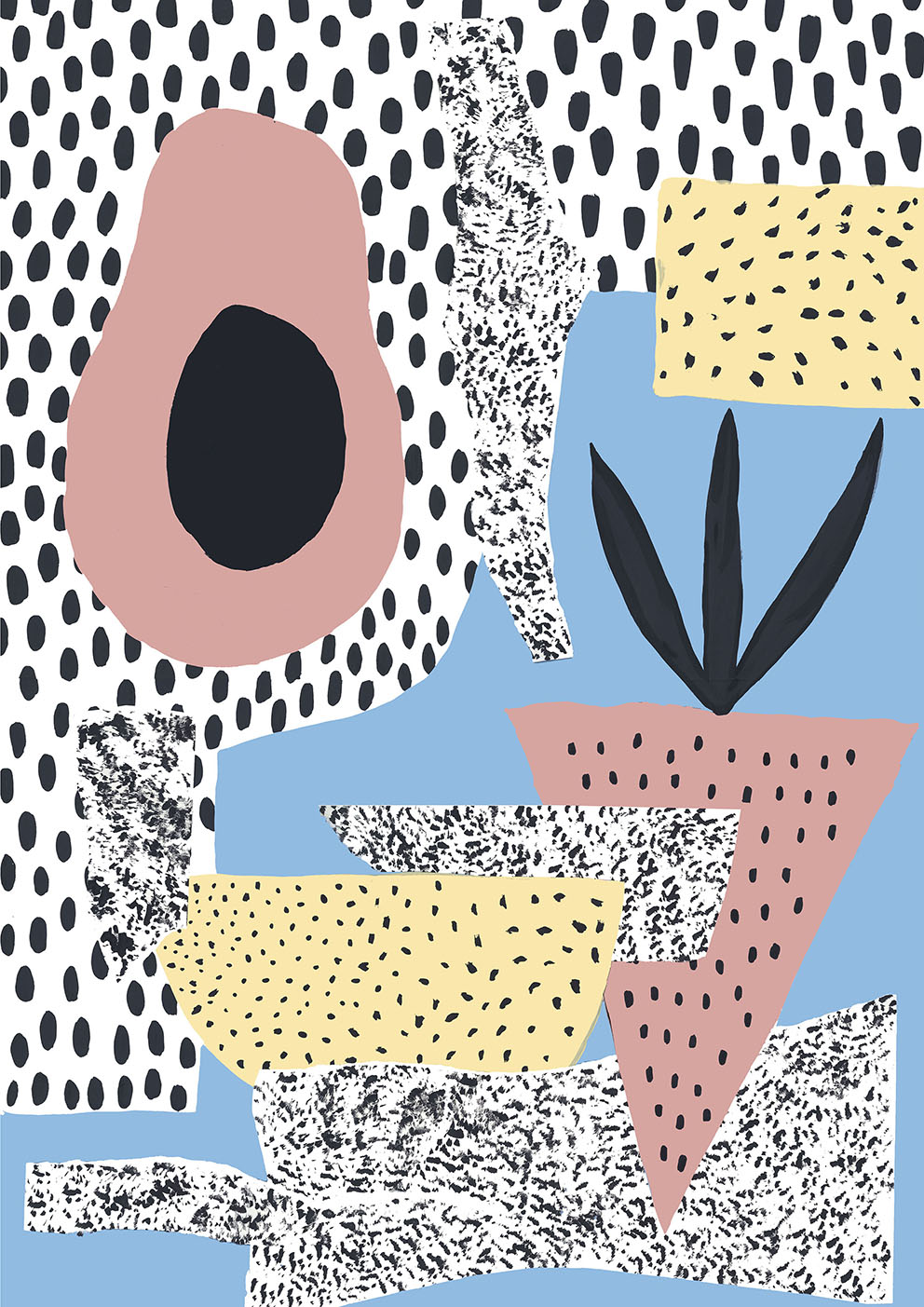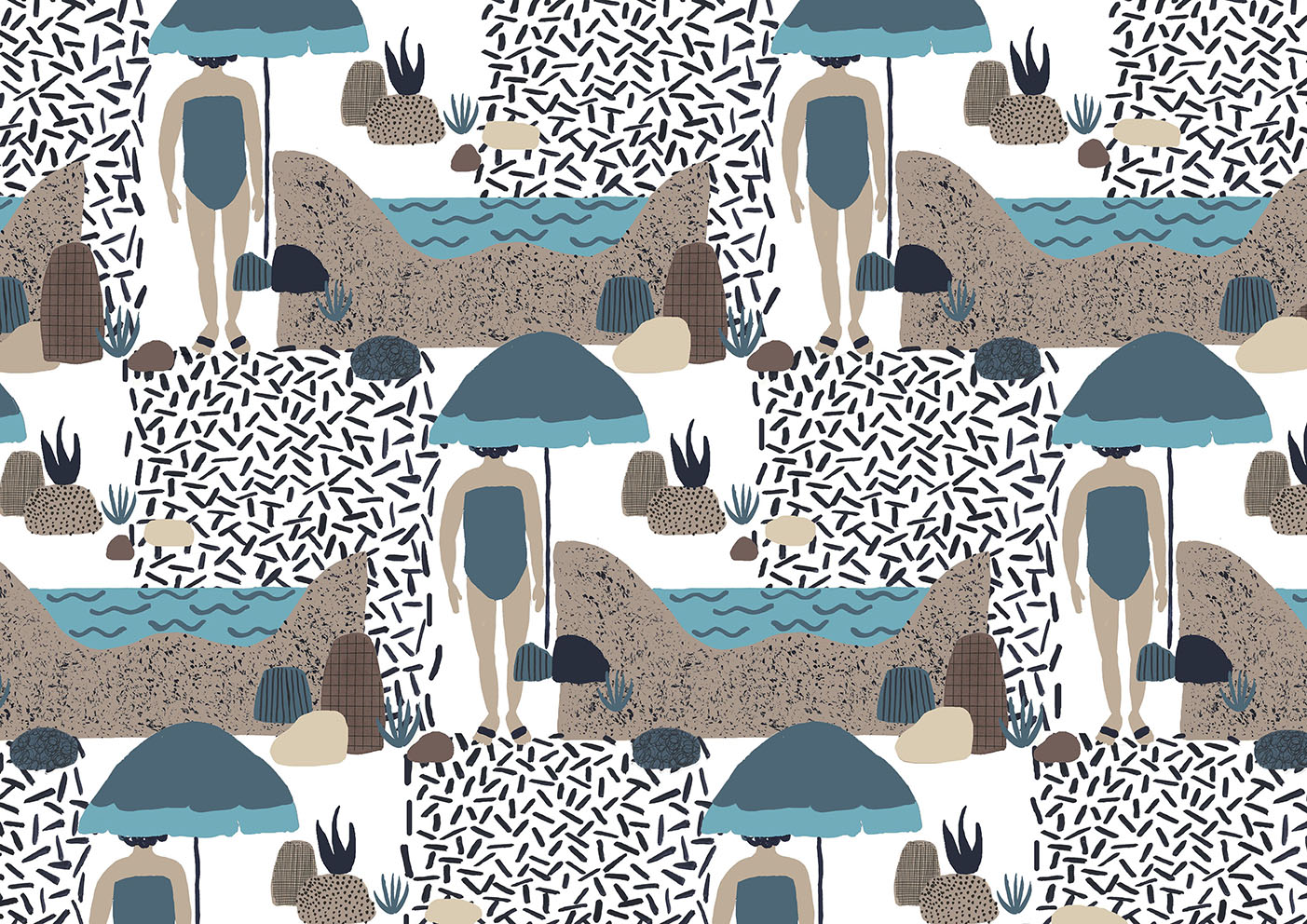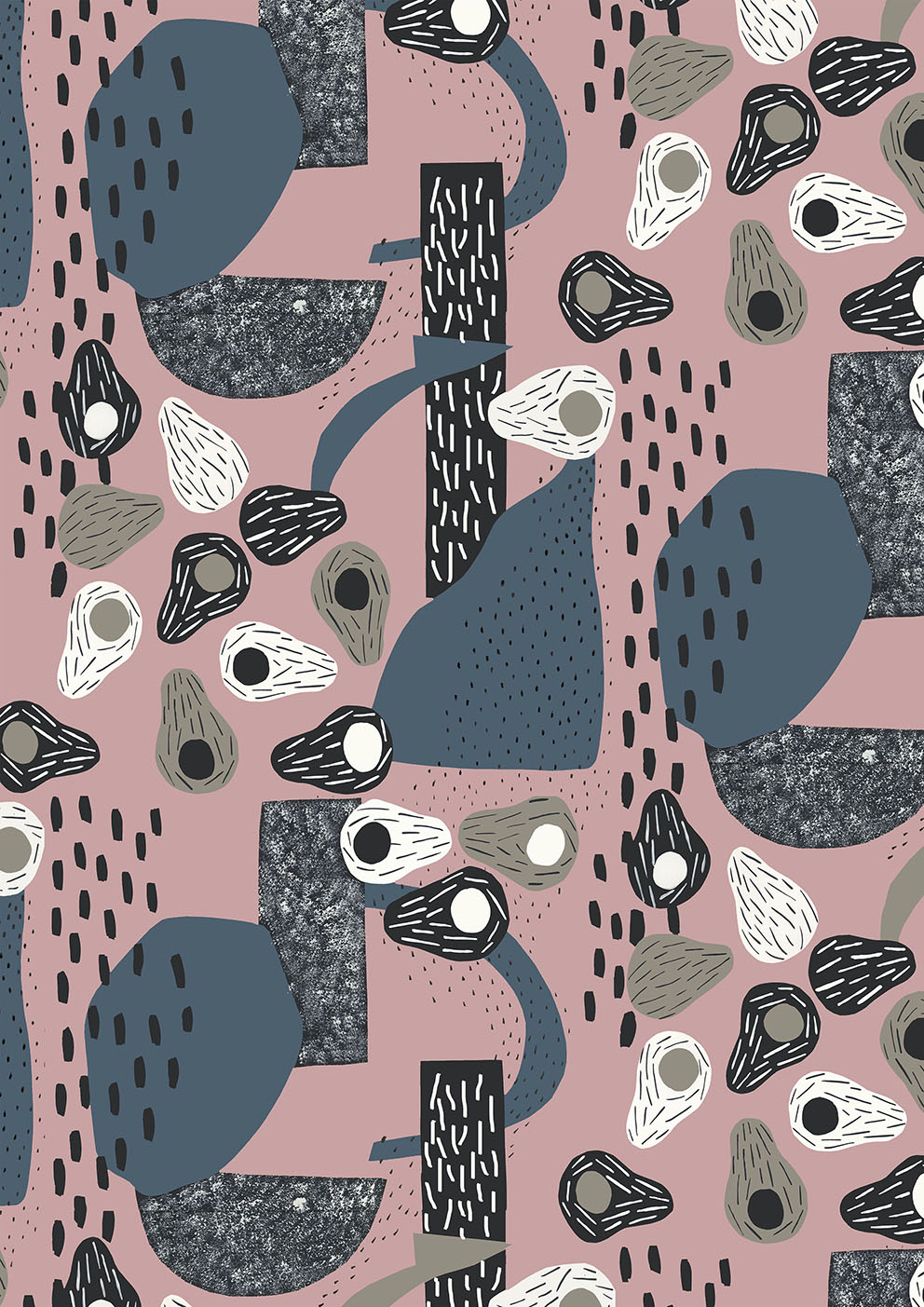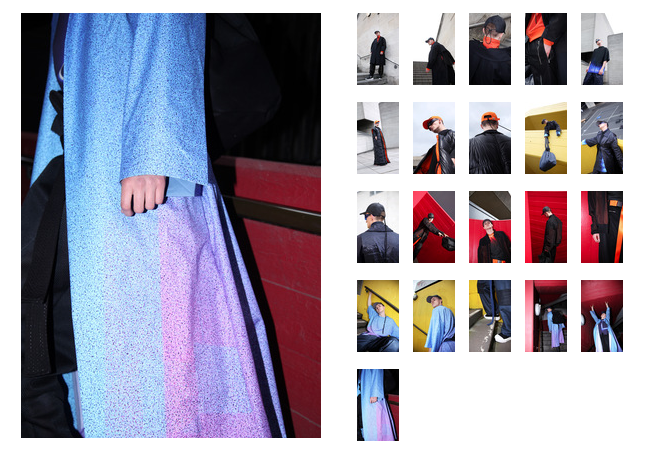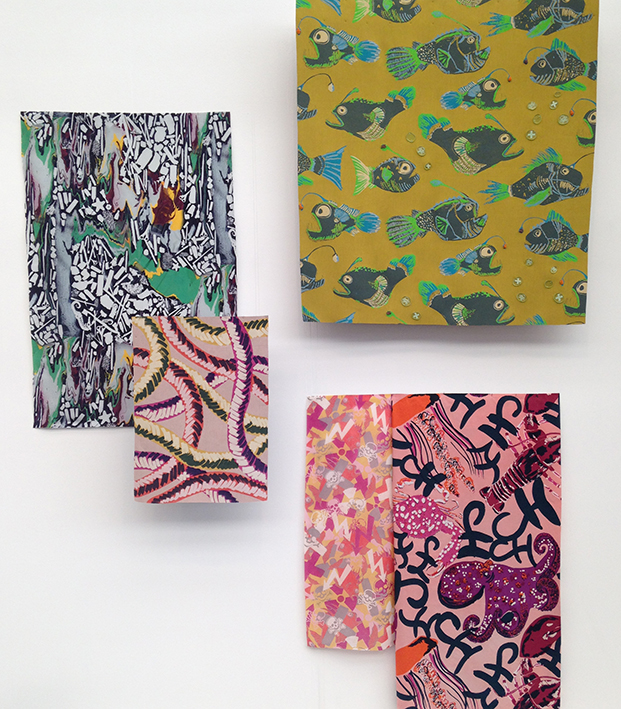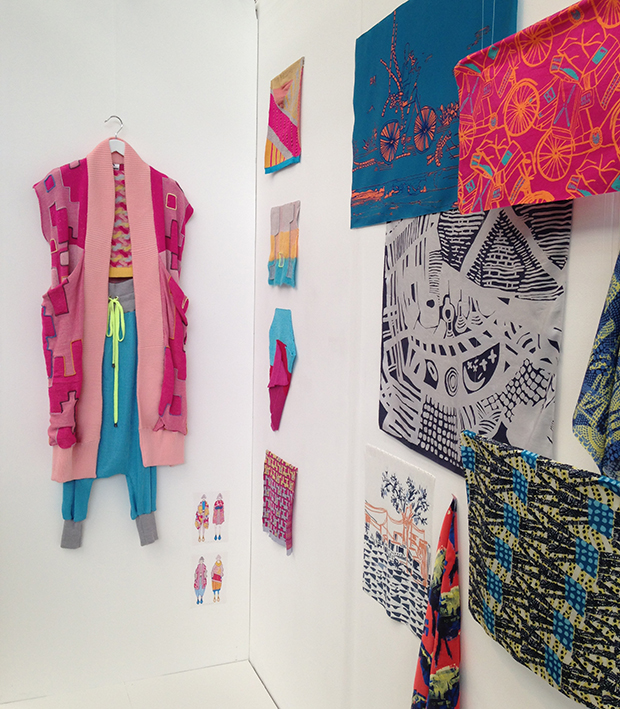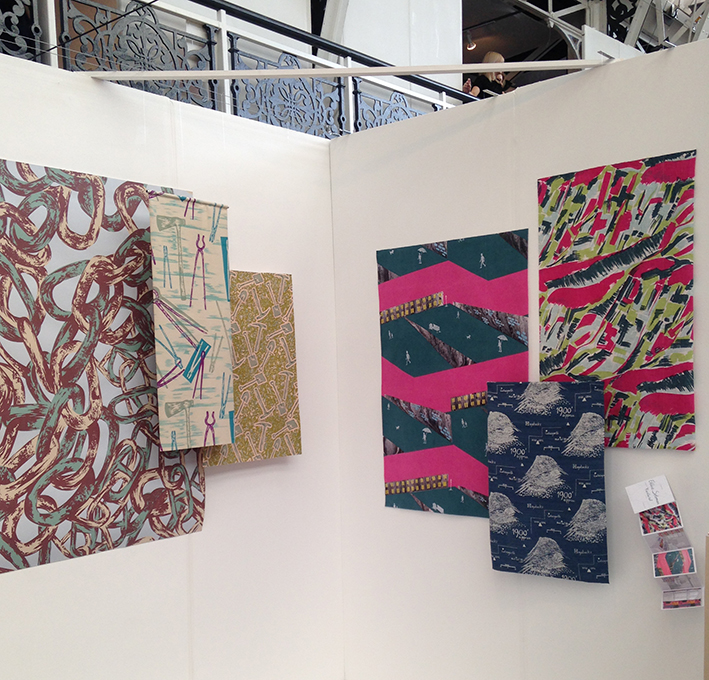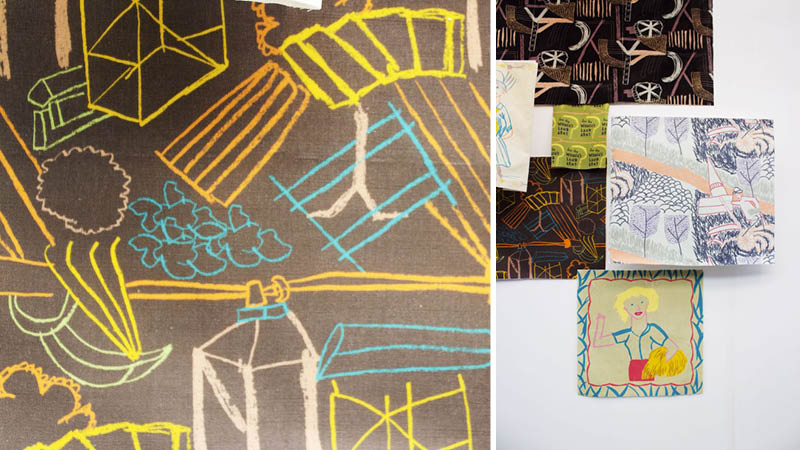Tell us about your collection
‘We See Creature Folk’ is a body of work which explores and illustrates several narratives through print and pattern. These stories portray social justice messages and are told through the creation of creatures and locations. Inspired heavily by both primitive and folk art; the collection supports the idea of something being created with a purpose but also being appreciated as art itself as well as having a very handcrafted feel. ‘We See Creature Folk’ is primarily aimed at children, however, each design’s purpose is multi-functioning through all ages, genders, and final functions and purpose. The printed textile collection spans further than just a fashion range aiming to work as a lifestyle range with endless possibilities for its reproduction in various products such as: ceramics, storybooks, badges, masks, costumes, mobiles and wall hangings. The relationship between shape, form, colour and figurative illustrations moulded this collection, working as an exploration of how illustration and pattern intertwine.
What were the highs and lows through creating your collection?
A really exciting moment during the creation of this collection was the inception of my concept – it was an idea that really meant something to me and something I was passionate about. That extra bit of researching meant I had an idea that I could really go for it with and I didn’t need to worry about tiring of my idea.
Something that was difficult throughout FMP was keeping going and not running out of puff, especially when it feels like you’re running out of time with so much to do. However, even though it’s a cliché, it all does come together in the end!
Another high from my project was shooting all of my fabrics for my Look book, it was so nice after all those months of working on the designs to see everything coming to life. It was also really fun to get creative with shoot ideas.
Any advice for students following in your footsteps?
Try to get at least one internship whilst at university! It does wonders for your confidence and the more you have when you leave the easier it will be to find a job as you’ll have invaluable experience!
Also, just continue working through – even though you may want to slow down or give up in a project. You only get to do it once so you may as well make the most of being at uni’ and having all the feedback – that is probably the thing I’m going to miss the most! With that in mind take as much work to your tutors as you can during tutorials. The more you have the more they can help you!

